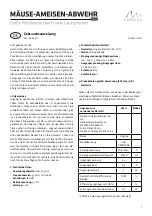
WF-10T
Case Former
Theory of Operation
4-18
4
THEORY OF OPERATION
All motions of the WF-10T Case Former are controlled by the PLC (Programmable Logic
Controller), which is located in the main electrical control enclosure. Inductive and optical
proximity sensors are used to detect the position of the machine’s components and the cases
being formed. Interlock switches are used to ensure that the doors are closed while the machine
is in operation. The touchscreen and switches on the control panel form the user interface. The
sensors, switches, and panel provide the input signals to the PLC. The PLC then decides upon
the next stage of machine operation, and sends electrical signals to the pneumatic solenoid
valves. These valves control the flow of the compressed air to the pneumatic cylinders that move
the different machine components.
4.1
Sequence of Operations
The WEXXAR Model WF-10T Case Former is an automatic machine designed to form corrugated
cases and seal the bottom flaps with tape. Flat cases are loaded into the hopper and the
machine forms them at a consistent speed, upon demand, without requiring further operator
input. After the magazine has been loaded and the machine started, operation is fully automatic
until the magazine requires refilling.
The steps involved in the case formation are:
1) Case
Supply
A hopper holds the folded cases ready for erecting, and feeds them into the machine.
The cases stand edgewise on an angled gravity-fed hopper, which advances the cases to
the case forming section, where they are selected one at a time for processing. The
weighted hopper pushers are also part of the feed system. They apply constant
gravitational pressure to the cases at the top of the case stack to ensure proper operation
of the case separator and case injector.
2) Case
Separation
The case separator, located on the frame arch, selects the first case from the magazine
stack. It moves upwards, causing a small horizontal blade on its surface to catch the
case edge and drive it up into a slot. This slot is the caliper slot, and its width is set to
suit the thickness of the case blank flat corrugate thickness specified at the time that the
machine was ordered. When the case is securely pushed into the caliper slot, the
separator returns to the
DOWN
position, allowing the separated case to move forward
ready for the next operation. The down-force applied by the weighted magazine pushers
and the stacked case blanks on the gravity-fed hopper pushes the next case into place
against the case separator backing plate in preparation for the next cycle. This
movement forces the bottom of the case in the caliper slot away from the backing plate.
Sensors
Switches
Buttons
Pneumatic
System
PLC
Analyses inputs and sends
instructions about which
pneumatic valves need to
be opened/closed
Senses current machine
status and user inputs and
sends information
Moves the machine
components into their
next state
Содержание WF-10T
Страница 2: ...WF 10T Case Former ...
Страница 118: ...WF30T Case Former Appendix A MSDS Geralyn FMG 387 106 ...
Страница 119: ...WF30T Case Former Appendix A MSDS Geralyn FMG 387 107 ...
Страница 120: ...WF30T Case Former Appendix A MSDS Geralyn FMG 387 108 ...
Страница 121: ...WF30T Case Former Appendix A MSDS Geralyn FMG 387 109 ...
Страница 122: ...WF30T Case Former Appendix A MSDS Geralyn FMG 387 110 ...
Страница 123: ...WF30T Case Former Appendix A MSDS Geralyn FMG 387 111 ...
Страница 125: ...WF 10T Case Former Appendix B Keystone Nevastane HT 2 113 ...
Страница 126: ...WF 10T Case Former Appendix B Keystone Nevastane HT 2 114 ...
Страница 127: ...WF 10T Case Former Appendix B Keystone Nevastane HT 2 115 ...
Страница 128: ...WF 10T Case Former Appendix B Keystone Nevastane HT 2 116 ...
Страница 129: ...WF 10T Case Former Appendix B Keystone Nevastane HT 2 117 ...
















































